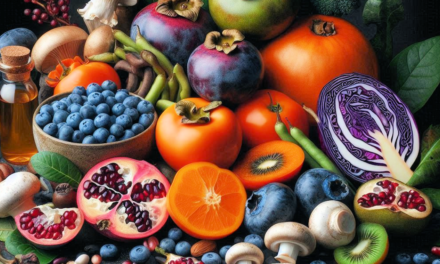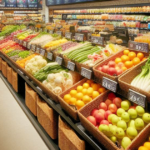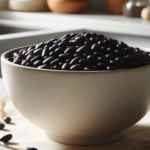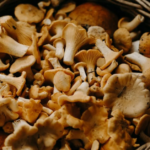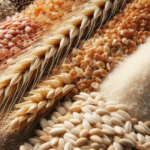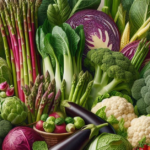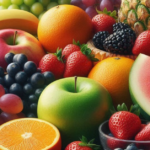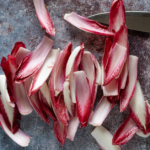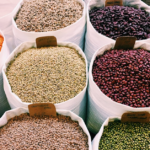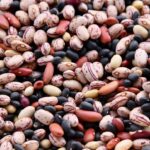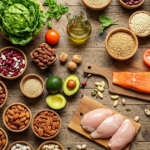As someone living with diabetes, navigating the world of fruit consumption can be a delicate balancing act. Contrary to common misconceptions, many fruits are not only permissible but highly advantageous in a diabetic diet when selected with care.
These sweet, vibrant treats bring a wealth of essential nutrients, including vitamins, minerals, and especially fiber, which plays a crucial role in blood sugar management. The fiber found in fruits helps slow the absorption of sugar into the bloodstream, preventing sudden spikes in blood glucose levels, making certain varieties an integral part of effective diabetes management.
While it’s true, that fruits contain natural sugars, their overall nutritional profile–rich in fiber, antioxidants, and other healthful compounds–can actually support blood glucose control and contribute to a balanced diet. The key lies in understanding the glycemic index (GI) of fruits, which measures how quickly they raise blood sugar levels, and opting for those with a lower GI.
Best Fruits for Diabetics: Fresh, Frozen, or Canned Without Added Sugars
If you have diabetes, it’s important to concentrate on eating fresh, frozen, or canned fruits that are free from added sugars. These forms of preparation guarantee that the fruits maintain their nutritional benefits while minimizing excessive carbohydrate intake.
My personal favorites are berries – strawberries, raspberries, and blueberries. Not only are they low in sugar, but they’re also packed with antioxidants and vitamins, making them superb choices for keeping my blood sugar levels stable.
Low Glycemic Index (GI) and Glycemic Load (GL) Fruits
Fruits like kiwi, apricots, and peaches have low GI and GL values, making them suitable for individuals with diabetes. These fruits help maintain stable blood sugar levels, which is a constant priority for me.
Cherries and avocados are also great options – in addition to being low in sugar, they boast anti-inflammatory properties that can be beneficial for diabetes management.
What About Dried Fruits?
While many of us love the refreshing taste of watermelon, it’s important to consume it in moderation due to its high glycemic index (GI). Pineapple is another fruit that we should tap the brakes on. It contains a relatively high amount of natural sugar, which can quickly raise our blood glucose levels.
Similarly, raisins and other dried fruits, while convenient snacks, are more concentrated in sugars due to the dehydration process, so I opt for small portions.
Certain dried fruits are often processed by adding sugar to enhance their flavor or preserve them. These include:
1. Cranberries: Due to their natural tartness, cranberries are commonly sweetened with sugar or fruit juices during the drying process to make them more palatable[2][5].
2. Mangoes: Some dried mangoes are coated with sugar to enhance their sweetness[1].
3. Pineapples: Similar to mangoes, dried pineapples often have added sugar[1].
4. Bananas: Dried banana chips are frequently sweetened and sometimes fried, which adds sugar and fat[1].
5. Apples: Dried apples can also be sweetened with added sugar[1].
It is important to read the ingredients and nutrition information on the packaging to identify whether sugar has been added to dried fruits[3][4].
Should You Swig a Cold Fruit Juice for a Pick-Me-Up?
Fruit juices, even those without added sugars, lack the fiber found in whole fruits, which is essential for slowing down sugar absorption into the bloodstream. As a result, they can lead to quicker and higher spikes in my blood glucose levels. That’s why I always choose whole fruits over juiced alternatives for better diabetes management.
The Role of Fiber and Portion Control in Fruit Consumption
Fiber is an indispensable ally in healthy diabetic diets, particularly when it comes to fruit consumption. Fruits like apples, pears, and oranges are not only packed with essential nutrients but are also high in dietary fiber, which significantly aids in blood sugar management. The soluble fiber in these fruits helps to slow down the digestion and absorption of carbohydrates, effectively preventing quick rises in blood sugar levels.
The fiber content in these fruits contributes to a sense of satiety, which can help curb overeating and support your weight management efforts, a key factor in managing diabetes. Remenber, while incorporating fiber-rich fruits into your diet is beneficial, portion control is critical.
Fruits like grapes and mangos, while nutritious, can still impact blood glucose levels if consumed in large quantities. The key is being mindful of the amount of fruit we eat at one time, as practicing portion control mitigates the risk of blood sugar spikes and ensures that I reap the benefits of fruit consumption without adverse effects.
Incorporating Fruits into a Diabetic Diet by Effectively Pairing Fruits with Protein-Rich Foods
One strategy that has worked wonders for many is pairing fruits with protein-rich foods. For instance, combining an apple or a serving of berries with Greek yogurt or a handful of nuts provides a balanced snack with minimal impact on my blood sugar levels. This combination ensures a slow and steady source of energy without the risk of a sugar spike.
Incorporating fruits into meals or snacks alongside lean proteins and whole grains has become a staple in my diabetic diet. Fruits like guava and papaya are particularly beneficial due to their low sugar content and high levels of vitamins and minerals. These practices allow me to enjoy the sweetness of fruits without compromising my blood sugar management.
The Scientific Perspective on Fruit Consumption for Diabetics
From a scientific standpoint, the inclusion of fruits in the diet of individuals with diabetes is not just beneficial but essential for comprehensive health management. Studies have consistently highlighted the critical role that dietary fiber, antioxidants, and essential vitamins found in fruits play in blood sugar regulation and overall health.
Specifically, the fiber in fruits helps slow the absorption of sugar into the bloodstream, preventing sudden spikes in blood glucose levels, which is especially important for me as someone managing diabetes.
Including fruits such as berries, apples, and citrus fruits in your diet can help improve insulin sensitivity and lower inflammation. These benefits are vital for managing diabetes and preventing complications.
Scientific research supports the notion that not all fruits are created equal when it comes to their impact on blood sugar levels. Fruits with a low glycemic index (GI) and glycemic load (GL) are particularly recommended for individuals with diabetes because they have a less significant impact on blood glucose levels.
A study published in the American Journal of Clinical Nutrition found that participants who consumed low-GI fruits like berries and peaches experienced better long-term blood sugar control compared to those who consumed high-GI fruits like watermelon and pineapple.
For instance, the consumption of berries, which are rich in both fiber and antioxidants, has been consistently associated with improved blood sugar control and a lower risk of developing diabetes in multiple studies. This evidence underscores the importance of selecting the right types of fruits and incorporating them strategically into a diabetic diet to harness their health benefits without compromising blood sugar control.
Importance of Consulting Healthcare Providers for Personalized Advice
While these general guidelines are helpful, consulting with healthcare providers plays a pivotal role in managing diabetes effectively, especially when it comes to dietary choices such as fruit consumption.
Every individual’s body responds differently to foods, and what works for one person in terms of blood sugar management may not work for another. This personalized approach is something I believe everyone with diabetes should embrace wholeheartedly.
A certified dietitian can be instrumental in assessing your health status, eating habits, and glycemic control needs to recommend specific fruits that won’t spike your blood sugar levels. They can also provide invaluable portion size guidance and suggested the best times to consume these fruits to ensure they fit seamlessly into your overall diabetic diet plan.
If you’re living with diabetes, I highly recommend consulting with your healthcare provider to address any specific questions or concerns you may have about incorporating fruits into your diet. Some key topics to discuss could include:
- How to incorporate your favorite fruits while managing portion sizes
- Strategies for balancing fruits with other macronutrients for optimal blood sugar control
- Understanding how certain fruits may affect your individual blood glucose levels
- Setting realistic goals for fruit consumption that align with your diabetes management plan
This level of tailored advice has been invaluable for me in managing my diabetes while still enjoying a wide variety of nutritious and delicious fruits.
Takeaways on Selecting Fruits for Diabetic Diets
Navigating fruit consumption while managing diabetes requires a thoughtful approach, but it’s absolutely possible to enjoy these sweet treats as part of a balanced diet. Fruits, abundant in essential vitamins, minerals, and fiber, can play a significant role in a diabetic diet when chosen wisely.
The key lies in selecting varieties that are low in sugar yet high in nutrients that benefit blood sugar control and overall health. Berries, for instance, have become my go-to choice, as they’re celebrated not only for their antioxidant properties but also for their low glycemic impact, helping me maintain stable blood sugar levels.
However, it’s also crucial to consider portion sizes, as overconsumption of even low-sugar fruits can lead to increased blood sugar levels. I’ve learned to savor and appreciate the flavors and textures of fruits, which has helped me practice mindful eating and avoid overeating.
Consulting with healthcare professionals has been game-changing for me in tailoring fruit choices to my individual health needs and dietary goals. By staying informed, making mindful choices, and seeking personalized guidance, individuals with diabetes can enjoy a diverse range of fruits as part of a healthy, balanced diet, enhancing their overall well-being while keeping their blood sugar levels in check.
So, don’t deprive yourself of nature’s sweet treats – embrace them with knowledge and moderation, and you’ll be well on your way to a flavorful and diabetes-friendly lifestyle.
Go here to see a list of fruits to consider adding to your menus.
###
Remember, proactive self-care matters. Every step we take, every decision we make to better manage our diabetes makes a difference in how well and how long we live. Choose wisely. Live long, love life and be well.
The information on this site is not intended or implied to be a substitute for professional medical advice, diagnosis or treatment. The information on this site is for informational purposes only and is not intended to diagnose, treat, or cure any type of disease or condition. Diabetes Control Today does not guarantee any results for your specific situation. In support of our website, we may share resources offered by trusted partners. If you purchase products from any of these partners, the owners of this site may receive a portion of the proceeds. These affiliations allow us to continue bringing you valuable, potentially life-changing content.




